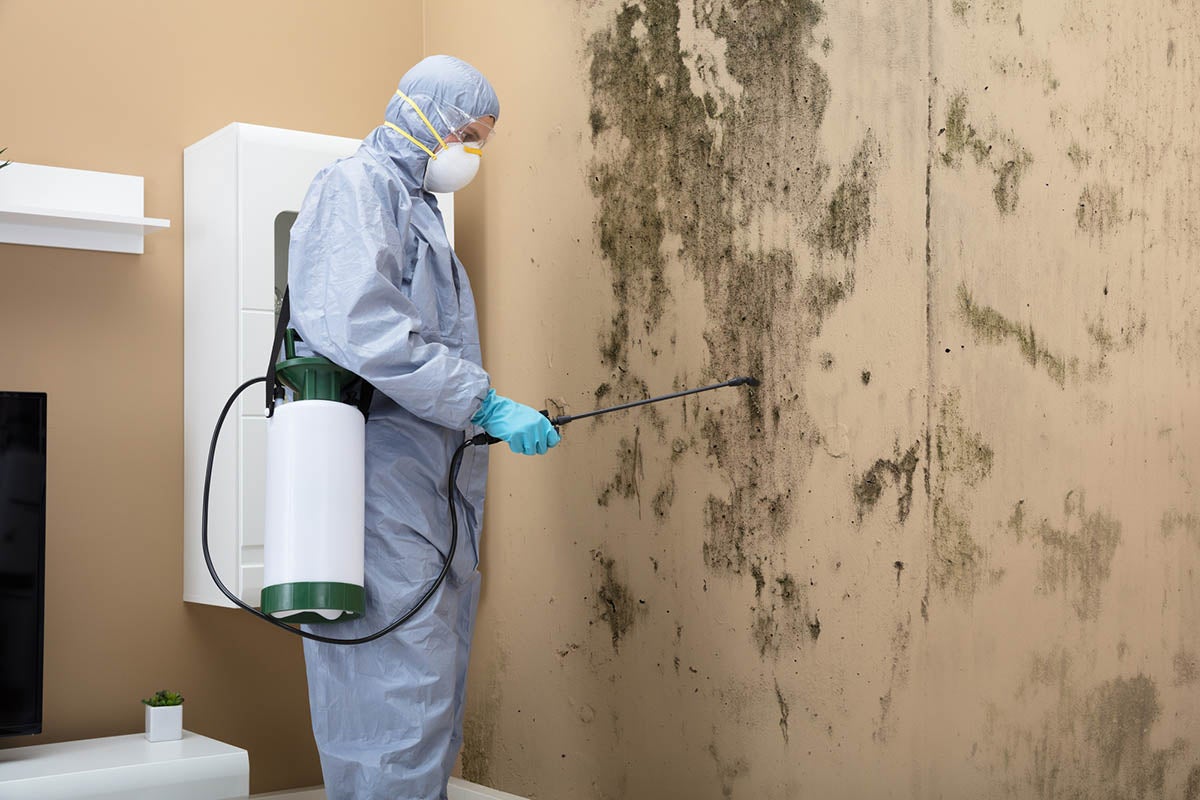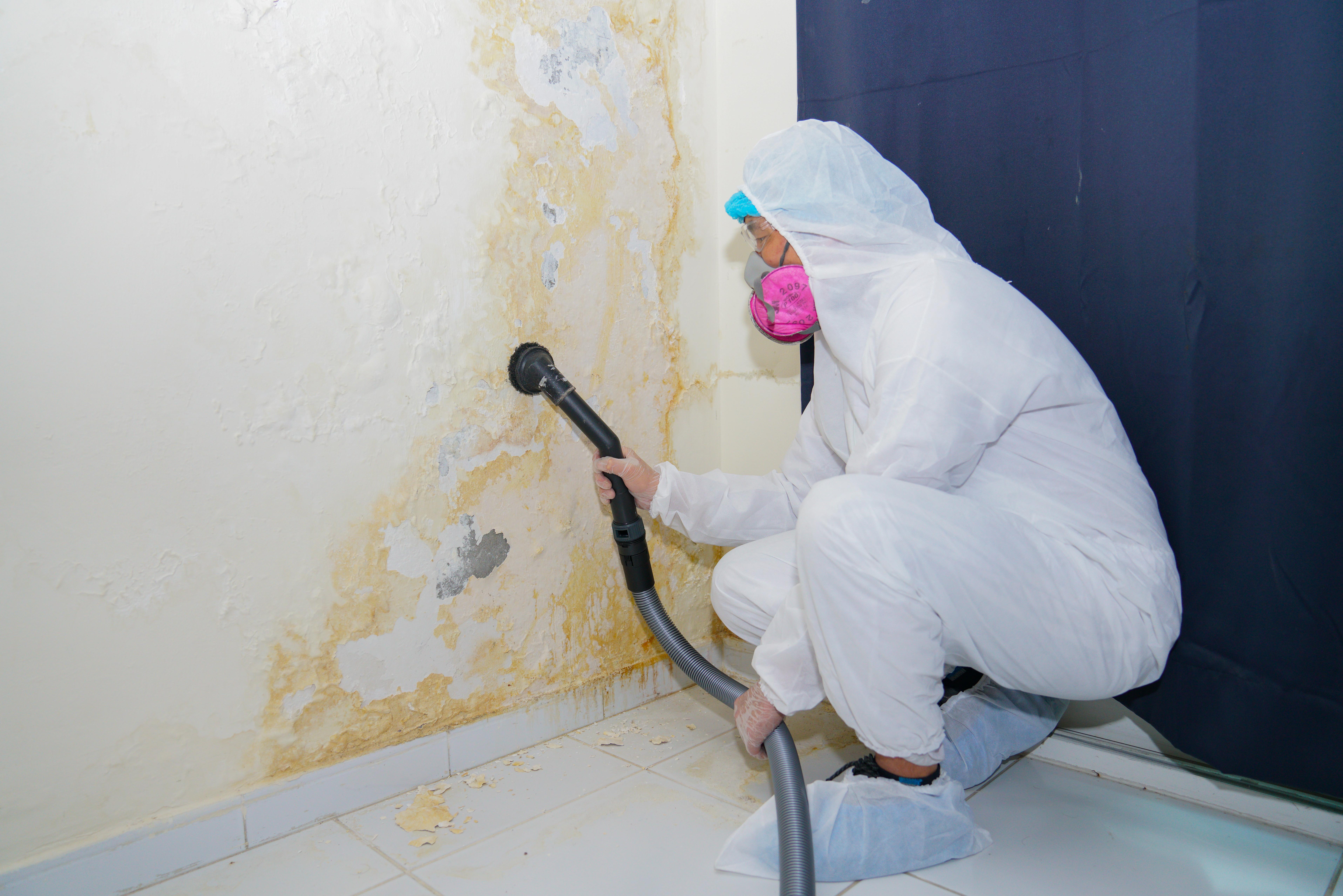Testing Air Quality After Mold Remediation
Wiki Article
Key Steps for Successful Post Mold Remediation
Dealing with mold issues in a efficient and timely way is important for preserving a healthy and balanced indoor atmosphere. Effectively completing mold remediation is a complex procedure that calls for interest to detail and adherence to particular protocols. From examining treated locations to applying wetness control procedures, each step plays a vital role in ensuring the efficacy of the removal procedure. There are crucial post-remediation steps that are equally vital however frequently overlooked. These actions not only validate the success of the removal efforts yet additionally add to preventing future mold and mildew growth.Examination of Treated Areas
Upon conclusion of the mold remediation procedure, a thorough assessment of the dealt with areas is vital to ensure the efficiency of the remediation initiatives. This evaluation acts as a crucial action in the post-remediation stage to verify that the mold elimination and cleaning procedures achieved success in getting rid of the mold and mildew infestation and restoring a risk-free interior setting. The inspection ought to be performed by certified professionals who have the know-how to assess the remediated areas carefully.Throughout the examination, various factors are assessed to figure out the success of the removal procedure. These consist of aesthetic analyses to check for any signs of mold growth or water damage, moisture levels to confirm that the area is dry and totally free of excess moisture that might advertise mold and mildew re-growth, and air high quality testing to make sure that the indoor air is risk-free to breathe. Furthermore, the assessment might entail making use of specialized devices such as moisture meters and thermal imaging video cameras to find surprise mold and mildew or dampness pockets that could result in future mold problems if left unchecked. In general, an extensive evaluation of the treated locations is crucial to validate the performance of the mold and mildew removal efforts and provide tranquility of mind to the owners of the residential or commercial property.

Moisture Control Actions
Efficient dampness control measures are crucial for avoiding mold and mildew development and maintaining a healthy interior setting. Additionally, utilizing dehumidifiers in moist locations can aid decrease humidity degrees, making it harder for mold and mildew to thrive.Frequently inspecting and maintaining the building's exterior can likewise protect against dampness intrusion. Post Remediation verification. Making sure that rain gutters are clear, downspouts straight water far from the foundation, and the roofing is in great condition can help avoid water from seeping into the structure. Properly securing doors and windows can likewise assist keep moisture out
Any kind of spills or leaks must be cleaned and dried out within 24-48 hours to avoid mold and mildew growth. By implementing these dampness control steps, the risk of mold reoccurring can be dramatically minimized, creating a much healthier indoor atmosphere.
Proper Ventilation Assessment
An integral aspect of ensuring a healthy and balanced interior setting article mold and mildew remediation is conducting a complete evaluation of the ventilation system. Appropriate ventilation assessment plays an essential role in preventing future mold and mildew growth and maintaining air quality within the damaged area.Furthermore, assessing the air flow system includes analyzing the circulation of air throughout the location to identify any kind of areas of poor blood circulation where wetness and contaminants can collect. Correct ventilation not just assists in controlling humidity degrees but additionally aids in getting rid of airborne mold and mildew spores and other pollutants, consequently enhancing total indoor air top quality. By dealing with any kind of ventilation concerns post mold and mildew removal, property owners can develop a healthier and extra comfortable atmosphere for occupants while minimizing the threat of mold re-infestation.
Cleansing and Sanitation Protocols
To guarantee thorough mold remediation, thorough adherence to specific cleaning and sanitation methods is necessary. Cleaning and disinfection procedures play an essential role in the post-mold remediation phase to stop the recurrence of mold growth and make sure a secure and healthy and balanced atmosphere. The primary step in this procedure is the elimination of any kind of noticeable mold and mildew development using appropriate cleaner and methods. It is necessary to make use of EPA-approved fungicides and anti-bacterials to properly remove mold and mildew spores and prevent their regrowth.After the initial cleansing, detailed sanitation of the impacted areas is necessary to kill any kind of staying mold spores and hinder their spreading. This step is crucial in preventing the spread of mold and mildew to other components of the building. In addition, executing preventive actions such as applying mold preventions and maintaining correct ventilation can aid reduce the threat of future mold infestations. By adhering to strict cleansing and disinfection procedures, home proprietors can guarantee the effective removal of mold and mildew and create a healthy and balanced indoor setting for occupants.
Monitoring and Maintenance Strategy
Carrying testing air quality after mold remediation out a normal monitoring and maintenance plan is vital for making certain the lasting effectiveness of mold remediation efforts. Once mold remediation is completed, it is essential to establish a monitoring routine to assess the success of the remediation process. This includes frequently checking the formerly impacted areas for any type of indications of mold recurrence or water damage. By conducting regular checks, any kind of brand-new mold and mildew development can be quickly determined and dealt with, preventing a reoccurrence of the initial trouble.Additionally, establishing an upkeep strategy is key to avoiding future mold and mildew concerns. Regular maintenance not only assists in protecting against mold however likewise adds to keeping a healthy and balanced indoor environment - Post Remediation Inspection near me.
Verdict
In final thought, successful blog post mold removal includes extensive inspection of dealt with areas, application of moisture control procedures, assessment of correct ventilation, adherence to cleansing and disinfection procedures, and facility of a tracking and upkeep plan. These vital steps are crucial to guarantee that mold and mildew growth is successfully removed and avoided from reoccuring in the future. By complying with these standards, homeowner can preserve a healthy and risk-free setting for residents.Upon conclusion of the mold and mildew remediation process, a detailed evaluation of the dealt with locations is vital to make certain the effectiveness of the remediation efforts. These include visual evaluations to examine for any kind of signs of mold growth or water damage, wetness degrees to validate that the location is free and dry of excess humidity that could promote mold re-growth, and air quality testing to guarantee that the indoor air is safe to breathe. Furthermore, the assessment might include utilizing specialized tools such as wetness meters and thermal imaging cams to find surprise mold and mildew or dampness pockets that might lead to future mold and mildew issues if left untreated. By attending to any type of ventilation problems post mold removal, building proprietors can produce a healthier and more comfortable setting for owners while minimizing the danger of mold re-infestation.

Report this wiki page